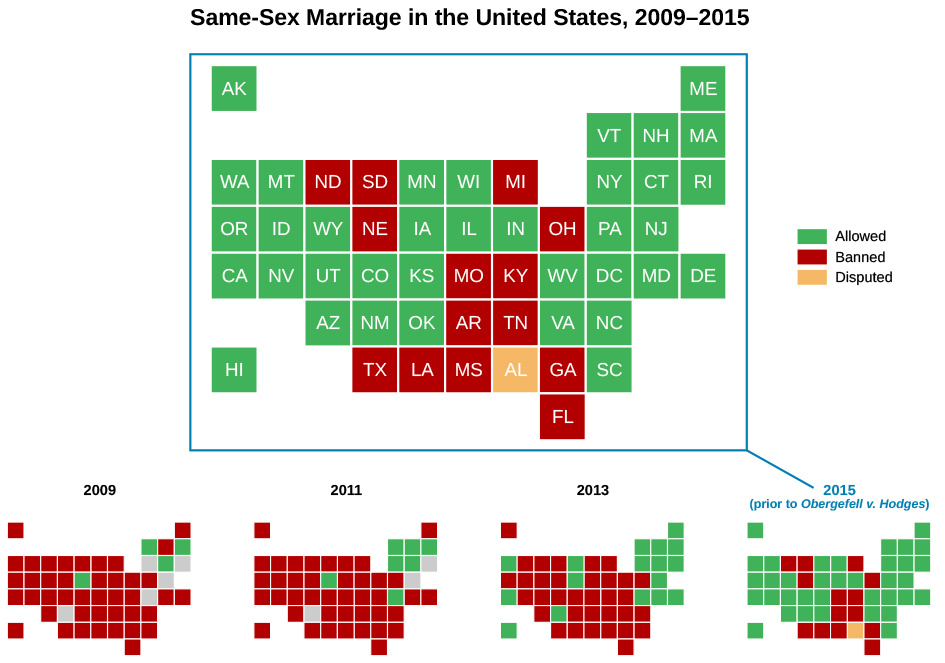| << Chapter < Page | Chapter >> Page > |

Mothers Against Drunk Driving (MADD) was established in 1980 by a woman whose thirteen-year-old daughter had been killed by a drunk driver. The organization lobbied state legislators to raise the drinking age and impose tougher penalties, but without success. States with lower drinking ages had an economic interest in maintaining them because they lured youths from neighboring states with restricted consumption laws. So MADD decided to redirect its lobbying efforts at Congress, hoping to find sympathetic representatives willing to take action. In 1984, the federal government passed the
National Minimum Drinking Age Act (NMDAA), a crosscutting mandate that gradually reduced federal highway grant money to any state that failed to increase the legal age for alcohol purchase and possession to twenty-one. After losing a legal battle against the NMDAA, all states were in compliance by 1988.
By creating two institutional access points—the federal and state governments—the U.S. federal system enables interest groups such as MADD to strategize about how best to achieve their policy objectives. The term
venue shopping refers to a strategy in which interest groups select the level and branch of government (legislature, judiciary, or executive) they calculate will be most advantageous for them.
The strategy anti-abortion advocates have used in recent years is another example of venue shopping. In their attempts to limit abortion rights in the wake of the 1973
Roe v. Wade Supreme Court decision making abortion legal nationwide, anti-abortion advocates initially targeted Congress in hopes of obtaining restrictive legislation.
Some policy areas have been redefined as a result of changes in the roles that states and the federal government play in them. The constitutional disputes these changes often trigger have had to be sorted out by the Supreme Court. Contemporary federalism has also witnessed interest groups engaging in venue shopping. Aware of the multiple access points to our political system, such groups seek to access the level of government they deem will be most receptive to their policy views.

Notification Switch
Would you like to follow the 'American government' conversation and receive update notifications?